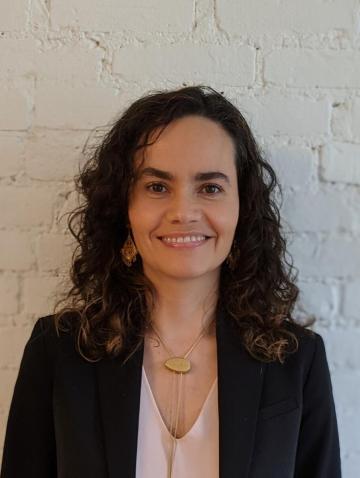Catalina Ospina
Catalina Ospina Jiménez is a scholar of Prehispanic and colonial Latin American material culture, focusing on the Andean and Amazonian regions. Her work explores how objects and bodily practices contribute to knowledge production and transmission in South American cultures, challenging traditional text-centric approaches to intellectual history.
This exploration coalesces in her current book project From Mouth to Hand: Mopa Mopa Practice in the Colonial Andes. Mopa mopa—a unique plant resin—was used by Indigenous Northern Andeans during the seventeenth and eighteenth centuries to decorate objects such as chests, gourds, and tabletop cabinets, mainly for the European and Creole markets. Focusing on the dazzling mopa mopa objects produced in the colonial period, the book drafts a history of their production, provides new perspectives on early global modern circulation processes, and nuances our understanding of how colonial structures inflicted injustices on colonial subjects in their capacity as knowers and intellectual producers. Overall, the book shows how mopa mopa objects teach us to think differently by scrambling our epistemic frameworks.
Recent publications delving into related topics include “Indigenous Knowledge and Women’s Cosmetics: Mopa Mopa in the Colonial Northern Andes” in Art History 46, no. 5 (2023, pp. 18–45); and “Between Sombreros and Diadems: A Pictorial Testament from Colonial Central Mexico” in Colonial Latin American Review 33, no. 2 (2024, pp. 1–33).
Ospina’s interdisciplinary background informs her approach to teaching and art historical research. She holds a Ph.D. in Art History from the University of Chicago, where she also earned a master’s degree focusing on contemporary Latin American art. Her MA work examined the artistic representation of political violence in Colombia during the 90’s. Prior to her art historical studies, Ospina pursued an undergraduate degree in Physics at the Universidad de los Andes in Bogotá.
Before joining Yale’s History of Art department, she was a postdoctoral associate at Yale Institute of Sacred Music. Other institutions that have supported her research include the Franke Institute at the University of Chicago, the Huntington Library, the Council on Library and Information Resources, and the Thoma Foundation.
